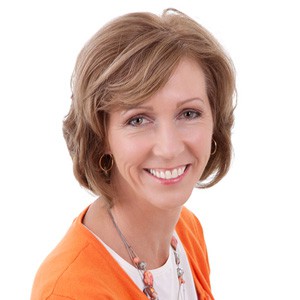The Challenge of Engagement: One Size Does Not Fit All
by Robin Young Cournoyer, BSN, MSN
Assistant Professor of Nursing
Course Coordinator PEDI
When teaching in higher education, it is crucial always to be open to the variety of learning styles that students possess. Some students like to work alone, while others learn more when working in collaboration with their peers. When creating a learning activity that fosters engagement, it is important to offer options that offer individual choice. Once the environment has been created for the learners, it is important to listen and observe the students during the session to assure the activity optimizes value for each student. The optimal goal should be to offer multiple means of accessing the knowledge and not a cookie cutter approach.
My pediatric class is a seven-week intensive course that includes four hours of classroom and nine hours a week of clinical. I typically have 35 students in my class and eight in clinical. The class is in the evening, before which many of the students have worked all day or have been in clinical. The challenge is to keep them engaged by offering a variety of ways to engage and own their learning. I explain that we all learn differently, thus it is essential that I offer a variety of opportunities for learning.
I begin each session by providing a definition of Universal Design Learning (UDL) and explain that what they will experience in this class may be different from previous courses.
There are many educational opportunities that I currently offer in my classroom to provide multiple means of engagement and recruit students’ interest in the material. I currently utilize: think-pair-share, small group activities, case studies, open-ended questions, fill-ins on PowerPoints, PechaKucha PowerPoints, ATI electronic practice exams, ATI videos, online practice math tests, physical assessment guides, concept maps, care plans, and ASQ Assignment.
I also use interactive pediatric emergency stations as an engagement opportunity, and I wish to reflect on them in greater detail. Before class, I set up 13 stations around the room. Each station is numbered and has educational material, questions, and actual devices for the students to practice with such as medications, EpiPen trainers, manikins, questions, math calculations, diastat, glucagon and insulin pen trainers. These are all carefully chosen because they are items the students need to be familiar with throughout this class and their nursing career. Before class, the students are asked to review the chapter on pediatric emergencies. The students are given a packet in class and asked to work in groups of two or three, attend each station, and complete the entire packet. I encourage them to work in groups, but there are some who prefer to work alone. This means of engagement offers the learners a variety of options to obtain the information.
I circle the room, ask and answer questions, and observe what they have documented. In one class, I noticed one student had nothing written on her paper. I asked if I could explain some of the stations to her. She responded, “No, not yet. I have taken pictures of all the stations, and then I will answer the questions at home. English is my second language, and it takes me a while to read and comprehend the written word. Once I have reviewed it at home, I will email you and ask you any questions.”
After communicating with this student, I was concerned that this educational modality might not be appropriate for her and other ESL students and could potentially present a barrier to their learning. However, when I questioned the student further, she answered, “I learned a lot with all of the hands-on [activities] and my peers read the information to me, but I need to be by myself to really absorb the information.”
One of my key learning points in participating in a UDL cohort at Goodwin University was that it is so important to try new strategies to engage students in learning. The lessons may work great with one group and totally flop with another.
Before participating in the UDL cohort, I would have been very concerned that this student had not documented anything on her packet. She had not followed my expectations during this hour-long session, so how was she going to learn the information? Her process was different from what I had expected, but I now understand that she owned it. I spoke with her privately a few days later and was assured that it had been a positive experience for her and enabled her to learn all of the key points on her own terms. This interaction caused me to reflect. Moving forward, I will be more cognizant of the individual’s desire to engage within the learning environment in the manner that is most conducive to their own learning style. My role is to observe, listen, mentor, and encourage the learning, not to direct the process.
Learn more about Nursing programs at Goodwin University.
Larn more about Universal Design for Learning at the Goodwin University Institute for Learning Innovation.

Robin Young Cournoyer was born in Revere, Massachusetts, and grew up in Nashua, New Hampshire. She and her husband, Tony, met in college and have raised three amazing young men. She started an independent childcare consulting company 27 years ago. This has enabled her to work with children, childcare teachers, owners, and directors. She has had the opportunity to work in many specialty areas, but is passionate about pediatrics and maternity. Her goal after graduating from UConn was to obtain employment as a college professor working with a diverse group of students. She says it is an honor to be part of the very welcoming Goodwin community and all it has to offer students.

